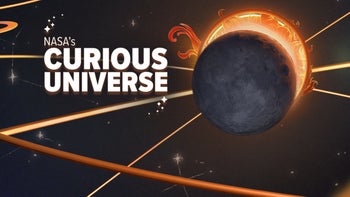NASA issues a warning about smartphones and the solar eclipse

This coming Monday, April 8th, at approximately 2:07 pm EDT, a solar eclipse will take place as the moon moves in front of the sun. At 3:20 pm EDT, totality begins and the sun will be completely blocked by the moon and this will last for roughly 3 minutes and 38 seconds and is the safest time to view the event. By 4:33 pm EDT, the moon will have passed the sun ending the event. Everyone knows not to look at the sun while the eclipse is taking place, but can you use your phone to take a picture while the eclipse is happening?
The answer is a resounding "NOOOOOOOOOOOOOOO" according to NASA (via XDA). If you point your camera at the sun during the eclipse, you could damage some of the components inside your phone. I know it's hard to believe, but the eggheads at NASA actually have an "X" account and the agency explains why you shouldn't just direct the camera on your phone to shoot photos of the eclipse unprotected.
"We asked our @NASAHQPhoto team, and the answer is yes, the phone sensor could be damaged just like any other image sensor if it’s pointed directly at the sun. This is especially true if you’re using any sort of magnifying lens attachment on the phone. You would need to utilize the proper filters just like on any other camera. The best practice would be to hold a pair of eclipse glasses in front of your phone’s lenses when photographing the Sun at any point other than totality."
We asked our @NASAHQPhoto team, and the answer is yes, the phone sensor could be damaged just like any other image sensor if it’s pointed directly at the Sun. This is especially true if you’re using any sort of magnifying lens attachment on the phone. You would need to utilize…
— NASA (@NASA) April 4, 2024
NASA suggests that instead of allowing the interior of your phone to melt into silicon and metallic puddles dripping out of your phone's speaker(s) and charging port, focus on taking pictures of the landscape in front of you and how it is impacted by the eclipse. That's the kind of brilliant response that you'd expect from men and women who carry a slide rule in their pockets.
NASA photographer Bill Ingalls says, "The real pictures are going to be of the people around you pointing, gawking, and watching it. Those are going to be some great moments to capture to show the emotion of the whole thing."










Things that are NOT allowed: